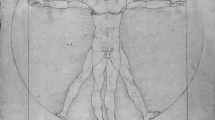Abstract
The infinite regress of Carroll’s ‘What the Tortoise said to Achilles’ is interpreted as a problem in the epistemology of mathematical proof. An approach to the problem that is both diagrammatic and non-logical is presented with respect to a specific inference of elementary geometry.
Similar content being viewed by others
Notes
See (Avigad 2003).
Prawitz analyzes the meaning of these logical notions in the terms of the notion of a proposition’s ground. The result is an account where the basic logical inferences—i.e. those logical inferences where the necessity of the conclusion is immediately seen—correspond directly to the the introduction and elimination rules of natural deduction. For the details, see (Prawitz 2012).
One may wonder if an analogous claim holds also of A in Carroll’s A–B–Z inference. (One may wonder this even even if identity is understood to be a logical notion. The notion of equality in the inference is not the notion of identity. Rather, it concerns whether two possibly distinct lengths have the same magnitude.) I believe a case can be made that an inference from B to Z is valid and non-logical, but this would require an in-depth analysis of Euclid’s notion of equal magnitude, which is beyond the scope of this paper.
On the other hand, if we go by the treatment of the equality of magnitude in the Elements, the inference from B to Z is not on its own justified. In contrast to order relations like ‘x is before y’, the equality of magnitude is explicitly declared to be transitive in an axiom given in the common notions of book I (the axiom is in fact premise A in Carroll’s syllogism). This fits with Manders’ analysis of Euclid’s proof method in Manders (2008). ‘x is before y’ is a co-exact relation and thus the method permits one to use diagrams to reason about it. On the other hand, equality of magnitude is an exact relation, and the method demands that all reasoning involving it be made explicit in propositions. I will discuss Manders’ analysis in more detail in the conclusion.
Prawitz in fact identifies an inference akin to \(\alpha\) as valid and non-logical in Prawitz (2013). It is: Adam is longer than Beatrice, Beatrice is longer than Carlo. Therefore, Adam is longer than Carlo.
A similar point concerning C′s relation to \(\alpha '\) can be made. As observed above, it is natural to interpret C as a model-theoretic statement—i.e. if A and B are true in a model \(\mathcal {M}\), then Z is true in model \(\mathcal {M}\). It thus provides some information about inference \(\alpha '\). This information, however, is not necessary to justify the inference.
The idea here is formulated from a more general perspective in Michael Detlefsen’s interpretation of Poincaré’s philosophical writings on mathematics in Detlefsen (1992). According to Detlefsen, non-logical mathematical inferences such as \(\alpha\) are central to Poincaré’s epistemology of mathematics. “In the case of Poincaréan proof, the key feature is the grasping or intuiting the mathematical architecture between p [the premise of a mathematical inference] and c [the conclusion of a mathematical inference] (p. 368).” In making a non-logical mathematical inference logical by adding a premise that expresses a universal feature of the given mathematical subject—as is done in the move from \(\alpha\) to \(\alpha '\)—one “abstracts away from this grasp of architecture itself and instead focuses on its net classical effect...[a logical proof] separates or detaches the net classical effect of a warrant or justification from that warrant or justification itself. It then replaces the actual grasp or comprehension of the underlying justification with reflection on the semantic or epistemic status thus abstracted from it (p. 369).”
I assume in what follows that a similar difficulty does not arise with respect to the visual verification of statements of fact.
For ease of exposition, I describe only the case where the diagram is constructed from the premises in the first stage. The same point applies mutatis mutandis to the case where the diagram is verified to satisfy the premise.
A similar procedure, termed integration of premises, is posited as fundamental in the psychological theory of reasoning presented in Knauff’s (2013). Knauff’s theory, in fact, is built around an account of inferences that exploit the transitivity of a linear order like \(\alpha\).
For these rules in Eu and E, see Section 5.2 of ‘The technical notions of Eu’ at www.john.mumma.org/Writings.html and Section 3.4 of Avigad et al. (2009), respectively.
References
Avigad J (2003) Number theory and elementary arithmetic. Philosophia Mathematica 11:257–284
Avigad J, Dean E, Mumma J (2009) A formal system for Euclid’s elements. Rev Symb Log 2:700–768
Carroll L (1895) What the tortoise said to achilles. Mind 104:691–693
Detlefsen M (1992) Poincaré against the logicians. Synthese 90:349–378
Hilbert D (1971) Foundations of geometry. Open Court Publishing Company, La Salle
Knauff M (2013) Space to reason: a spatial theory of human thought. MIT Press, Cambridge
Manders K (2008) The Euclidean diagram. In: Mancosu (ed) Philosophy of mathematical practice. Clarendon Press, Oxford, pp 112–183
Mumma J (2010) Proofs, pictures, and Euclid. Synthese 175:255–287
Pasch M (1882) Vorlesungen über neure geometrie. B.G. Teubner, Leipzig
Prawitz D (2005) Logical consequence from a constructivist point of view. In: Shapiro S (ed) Oxford handbook of philosophy of math and logic. Oxford University Press, Oxford, pp 671–695
Prawitz D (2009) Inference and knowedge. In: Pělis M (ed) Logica yearbook 2008. College Publications, London, pp 175–192
Prawitz D (2012) The epistemic significance of valid inference. Synthese 187:887–898
Prawitz D (2013) Validity of inference. In: Frauchiger M (ed) Reference, rationality, and phenomenlogy: themes from F\(\upphi\)llesdol. Ontos Verlag, Heusenstamm, pp 179–204
Stroud B (1979) Inference, belief, and understanding. Mind 88:179–196
Author information
Authors and Affiliations
Corresponding author
Ethics declarations
Conflict of interest
There were no sources of funding for this paper, and so no conflicts of interest exist.
Rights and permissions
About this article
Cite this article
Mumma, J. Carroll’s Infinite Regress and the Act of Diagramming. Topoi 38, 619–626 (2019). https://doi.org/10.1007/s11245-017-9530-4
Published:
Issue Date:
DOI: https://doi.org/10.1007/s11245-017-9530-4




